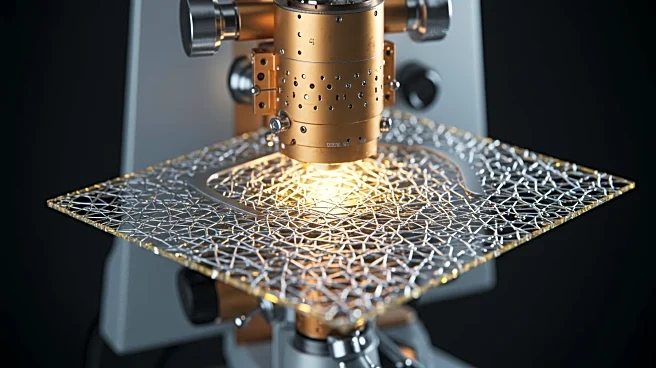What's Happening?
Researchers have developed a high-throughput method for mapping bandgaps in perovskite-inspired materials, focusing on the A3B2X9 family. These materials exhibit high stability and are ideal for optical property studies. Using a combinatorial printer, researchers synthesized composition-gradient sequences across the quinary material space Cs3(BixSb1-x)2(BryI1-y)9. The study involved printing droplet arrays and assessing bandgap consistency through optical characterization. The research revealed structural and elemental properties using XRD and EDS, highlighting the transition from 0D to 2D structures and the impact on bandgap behavior.
Why It's Important?
This research is significant for advancing the understanding of perovskite-inspired materials, which are known for their stability and potential applications in optoelectronics. The high-throughput method allows for rapid surveying of optical properties, providing insights into bandgap behaviors and phase transitions. The findings could lead to improved material design and performance in applications such as solar cells and LEDs, where bandgap properties are crucial.
What's Next?
Further research may focus on optimizing the synthesis methods and exploring additional composition spaces to enhance material properties. The insights gained from this study could inform the development of new materials with tailored optical properties, potentially leading to breakthroughs in energy-efficient technologies.











